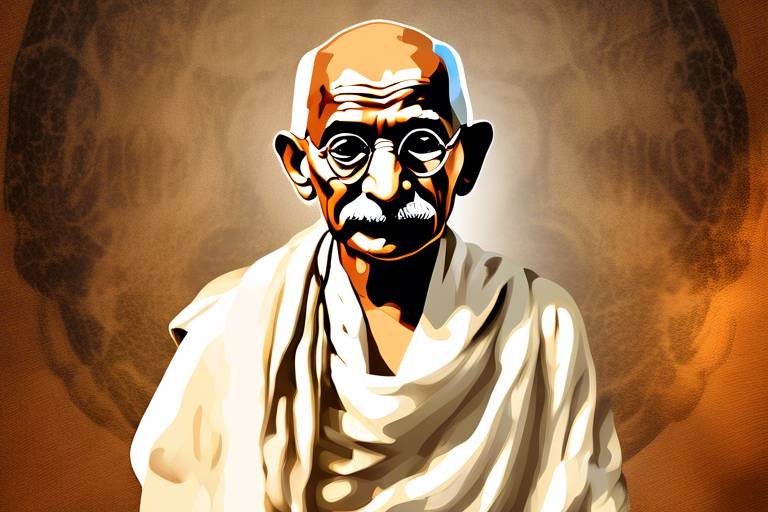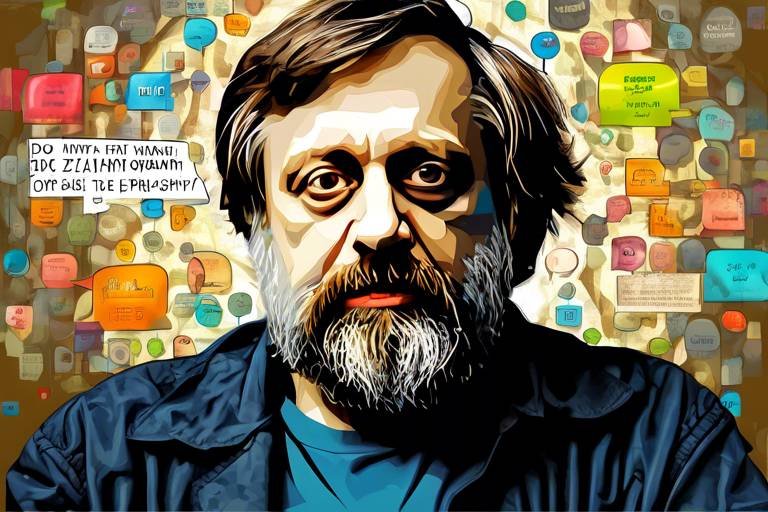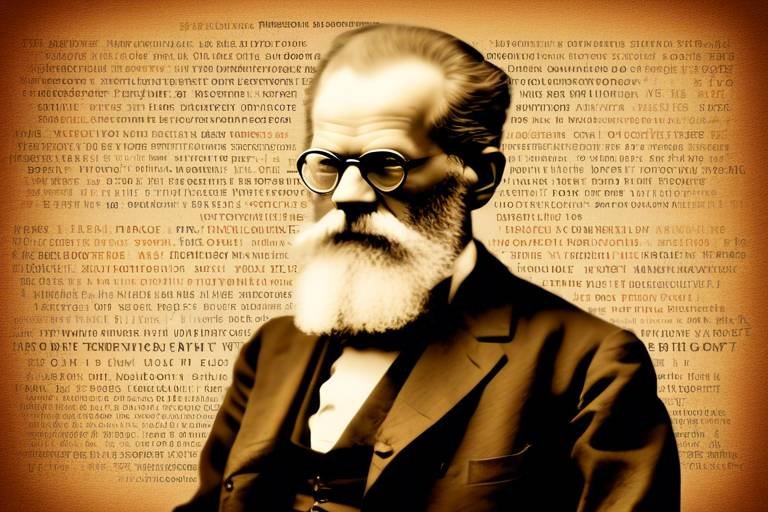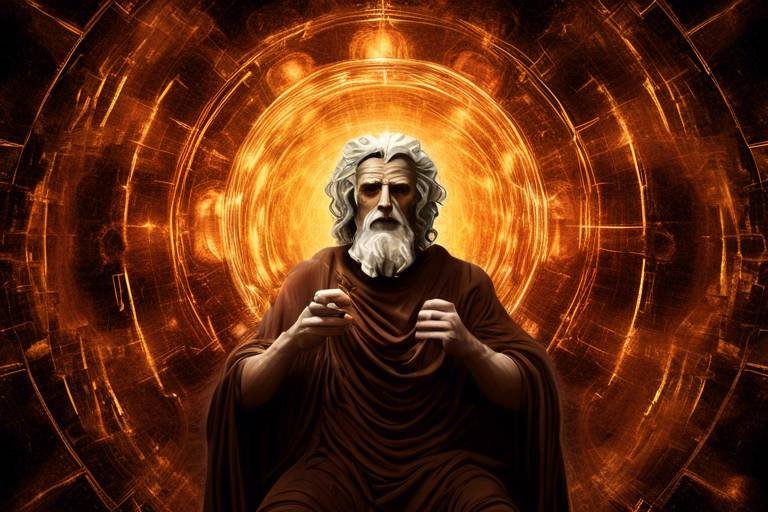Examining Walter Benjamin's Philosophy - A Glimpse
Walter Benjamin, a towering figure in 20th-century thought, invites us to explore the intricate layers of philosophy, aesthetics, and cultural criticism. His work is like a kaleidoscope, offering diverse perspectives on modernity, technology, and the very fabric of history. What makes Benjamin's philosophy particularly compelling is his ability to weave together complex ideas with a poetic sensibility, making his insights resonate even today. In this article, we will dive into the key aspects of Benjamin's thought, illuminating his unique approach to understanding the world around us.
Benjamin's philosophy is often characterized by a deep concern for the impact of technology on society and culture. His reflections on the nature of art, especially in the age of mechanical reproduction, challenge us to rethink our relationship with creativity and authenticity. He posits that the mechanical reproduction of art alters its “aura”, a term he uses to describe the unique presence that an artwork possesses in a specific time and space. This concept raises profound questions: What happens to art when it becomes mass-produced? Can we still find meaning in a world saturated with images? Benjamin's ideas compel us to confront these questions head-on, as they hold significant implications for contemporary art and culture.
Moreover, Benjamin's interpretation of historical materialism offers a distinct lens through which to view history. Unlike traditional narratives that often present a linear progression, Benjamin suggests that history is a tapestry woven from individual experiences and memories. He emphasizes the role of the individual in shaping historical narratives, reminding us that every person carries their own story within the larger context of societal change. This perspective is particularly relevant in today's world, where personal narratives often intersect with collective histories, creating a rich tapestry of human experience.
In exploring Benjamin's philosophy, we also encounter the concept of messianic time. This idea suggests a break from the conventional understanding of history, where time is viewed as linear and progressive. Instead, Benjamin offers a vision of time that is ripe with potential for revolutionary change. He invites us to consider the moments of disruption that can lead to profound transformation, both individually and collectively. This notion is a powerful reminder that within the chaos of modern life, there exists the possibility for redemption and renewal.
Benjamin's method of analysis involves the use of dialectical images, which serve as moments of revelation. These images allow us to grasp the complexities of history and the present, revealing the tensions and contradictions that often lie beneath the surface. By examining these images, we can uncover the hidden narratives that shape our understanding of the world. This approach encourages us to look beyond the superficial and engage with the deeper meanings embedded in our experiences.
Furthermore, Benjamin's critique of the notion of progress challenges conventional historical narratives. He argues that the idea of progress can obscure the realities of suffering and oppression that persist throughout history. This critical lens prompts us to question the stories we tell about ourselves and our societies. Are we truly progressing, or are we merely repeating cycles of injustice and inequality? By engaging with Benjamin's critique, we can cultivate a more nuanced understanding of our historical context and the challenges we face today.
As we navigate through Benjamin's philosophy, we also encounter his reflections on the relationship between art and technology. He raises concerns about the implications of mass reproduction on the authenticity of art, questioning whether the essence of creativity is lost in a world dominated by technological advancements. This dialogue between art and technology is particularly relevant in our digital age, where the boundaries between creation and reproduction are increasingly blurred. Benjamin's insights encourage us to reflect on the value we assign to art in an era of instant access and commodification.
In conclusion, Walter Benjamin's philosophical thought presents a rich tapestry of ideas that continue to resonate in contemporary discussions about culture, history, and technology. His unique approach challenges us to rethink our understanding of art, the nature of progress, and the complexities of modern life. By engaging with Benjamin's work, we not only gain insights into the past but also equip ourselves to navigate the intricacies of the present and future.
- Who was Walter Benjamin? Walter Benjamin was a German-Jewish philosopher and cultural critic known for his influential ideas on aesthetics, history, and modernity.
- What is the concept of aura? The concept of aura refers to the unique presence and authenticity of an artwork in a specific time and space, which is diminished in the age of mechanical reproduction.
- How does Benjamin view history? Benjamin views history as a complex interplay of individual experiences and collective narratives, emphasizing the importance of memory and personal stories.
- What is messianic time? Messianic time represents a break from linear history, suggesting that moments of disruption can lead to revolutionary change and redemption.
- How does Benjamin critique the notion of progress? Benjamin critiques progress as a myth that often obscures the realities of suffering and oppression, urging a more nuanced understanding of historical narratives.

The Concept of Aura
Walter Benjamin's concept of aura is a fascinating lens through which we can examine the essence of art and its relationship with time and space. In essence, aura embodies the unique presence of a piece of art, a kind of magical quality that is tied to its originality and authenticity. Imagine standing before a masterpiece in a museum; the feeling you get is not just from the colors and shapes on the canvas, but from the history, the emotions, and the context that surround it. This is the aura. However, in our modern age, marked by the proliferation of mechanical reproduction, the implications of aura take on a new significance.
With the advent of photography and mass production, Benjamin argues that art loses its aura. Think about it: when you see a famous painting in a book or online, does it evoke the same feelings as when you stand before the original? The answer is often no. This loss of aura can lead to a devaluation of art, transforming it from a unique experience into a mere commodity. In this context, the implications of aura are profound, as they challenge us to reconsider our relationship with art in an age where everything can be reproduced endlessly.
Benjamin's exploration of aura also extends to the social and cultural dynamics of art consumption. He posits that the experience of art is deeply tied to its context—its location, its history, and its audience. As we navigate through a world saturated with images and replicas, we must ask ourselves: what remains of the original experience? What does it mean to truly engage with art when the aura is diminished? This question resonates even more today, as we grapple with digital art and virtual experiences that further complicate our understanding of authenticity.
Moreover, Benjamin's insights into aura encourage us to reflect on the role of technology in shaping our perceptions of art. While technology can democratize access to art, providing opportunities for more people to engage with it, it also raises critical questions about the nature of that engagement. Are we merely spectators in a vast sea of images, or can we still find moments of genuine connection? This duality is at the heart of Benjamin's critique, urging us to navigate the complexities of modernity with a critical eye.
In summary, the concept of aura is not just a relic of the past; it is a crucial element for understanding our contemporary relationship with art. As we continue to explore the implications of mechanical reproduction and technology, we must remain aware of the unique qualities that make art a profound human experience. The challenge lies in preserving the essence of aura in a rapidly changing world, where the lines between original and reproduction are increasingly blurred.

aura
Walter Benjamin's concept of is one of the most intriguing and thought-provoking aspects of his philosophical thought. It encapsulates the unique presence and authenticity of an artwork, which is deeply tied to its existence in a specific time and space. Imagine walking into a museum and standing before a masterpiece; the painting radiates a certain energy that simply cannot be replicated. This is the aura. In our modern age, where mechanical reproduction is the norm, the implications of aura become even more critical.
In the era of digital art and mass reproduction, Benjamin's concerns about the loss of aura resonate profoundly. When a piece of art can be reproduced infinitely and shared across the globe in a matter of seconds, what happens to its authenticity? The aura, according to Benjamin, is diminished in this process, leading to a detachment from the original context and experience of the artwork. This raises a crucial question: can art still hold its significance when it is no longer unique?
Benjamin argued that the aura is not merely about the physical presence of the artwork but also its historical context and the viewer's experience. He believed that the aura is tied to the ritualistic aspect of art—its ability to connect individuals to a shared cultural heritage. When art is reproduced, it loses its ritualistic value, transforming into mere commodity. This transformation has profound implications for how we understand culture and art in the age of technology.
To illustrate the impact of aura in contemporary society, consider the following:
| Aspect | Original Artwork | Reproduced Artwork |
|---|---|---|
| Authenticity | Unique and irreplaceable | Mass-produced and widely available |
| Emotional Connection | Deep, personal engagement | Superficial, often fleeting |
| Cultural Significance | Embedded in tradition and history | Often stripped of context |
As we navigate through a world inundated with images and art forms, Benjamin's reflection on aura prompts us to reconsider our relationship with art. Are we losing something vital in our quest for accessibility? Or can we find new meanings and connections in the way art is shared today? These questions challenge us to think critically about the role of technology in shaping our cultural landscape.
In conclusion, the concept of aura serves as a lens through which we can examine the evolving nature of art in our society. While technology has transformed the way we engage with art, it also invites us to explore the deeper significance of authenticity and experience. As we continue to grapple with these ideas, Benjamin's insights remain relevant, urging us to reflect on what we value in our cultural expressions.
- What does Walter Benjamin mean by aura?
Aura refers to the unique presence and authenticity of an artwork, tied to its existence in a specific time and space. - How does mechanical reproduction affect aura?
Mechanical reproduction diminishes the aura of an artwork, leading to a loss of authenticity and emotional connection. - Why is aura important in understanding art?
Aura helps us appreciate the cultural and historical significance of art, emphasizing its role in connecting individuals to shared heritage.

reflects the unique presence of artworks in time and space. This section discusses the implications of aura in the age of mechanical reproduction and its relevance to contemporary art.
Walter Benjamin's concept of aura is a fascinating lens through which we can examine the unique presence of artworks in both time and space. Imagine walking into a gallery and feeling an inexplicable connection to a painting; that feeling is what Benjamin described as aura. It embodies the artwork's originality and authenticity, a quality that is inherently tied to its historical context and the physical space it occupies. In our fast-paced, technology-driven world, where images can be reproduced and disseminated at lightning speed, the aura of an artwork faces unprecedented challenges.
In the age of mechanical reproduction, the implications of aura become even more pronounced. With the advent of photography and digital media, artworks can be replicated endlessly, stripping them of their unique presence. Benjamin argued that this mass reproduction diminishes the aura, leading to a profound shift in how we engage with art. The original piece, once a singular experience, becomes just one of many copies, leading to questions about authenticity and value. How do we appreciate art when it becomes so easily accessible? This is a question that resonates deeply in contemporary art discussions.
Moreover, the relevance of aura in today's art world cannot be overstated. In an era where digital art and NFTs (non-fungible tokens) are gaining popularity, the concept of aura is being redefined. Artists are now exploring ways to reclaim that unique presence, often through innovative methods that challenge traditional notions of art. For instance, some contemporary artists are using technology not just as a medium but as a way to create a new kind of aura that is intrinsically linked to the digital space. This leads to a rich dialogue about what it means for an artwork to possess aura in a world where the lines between original and reproduction are increasingly blurred.
To further illustrate the impact of aura in the age of mechanical reproduction, consider the following table that summarizes key differences:
| Aspect | Original Artwork | Reproduced Artwork |
|---|---|---|
| Uniqueness | Possesses a unique aura | Lacks individual presence |
| Value | Often holds higher cultural value | Value can be diminished |
| Experience | Offers a direct, personal connection | Experience can be superficial |
| Historical Context | Embedded in its creation | Context may be lost in reproduction |
In conclusion, Benjamin's idea of aura remains a crucial framework for understanding the evolving relationship between art and technology. As we navigate through a world saturated with images, the challenge lies in rediscovering that unique connection with art that transcends mere reproduction. The conversation around aura and its implications encourages us to reflect on how we define authenticity and value in an age where everything can be duplicated.
- What is Walter Benjamin's concept of aura? Aura refers to the unique presence and authenticity of an artwork, tied to its historical and physical context.
- How does mechanical reproduction affect aura? Mechanical reproduction diminishes the aura by making artworks easily replicable, leading to questions about authenticity and value.
- Why is aura relevant in contemporary art? In the digital age, artists are redefining aura, exploring new ways to create unique experiences that engage audiences.
- Can digital art possess aura? Yes, many contemporary artists are finding innovative ways to instill a sense of aura in digital works, challenging traditional definitions.

Historical Materialism
Walter Benjamin's interpretation of is not just a regurgitation of Marxist theory; it is a vibrant lens through which we can view the complex tapestry of history. Unlike traditional historians who often focus on great figures and events, Benjamin emphasizes the importance of memory and experience in shaping historical narratives. He believes that history is not merely a linear progression of events but a rich, textured fabric woven from the lives and experiences of everyday individuals. In this sense, he challenges us to reconsider who gets to be a part of history and how their stories are told.
Benjamin posits that the past is not dead but rather it lingers in the present, influencing our perceptions and actions. He famously stated that “the past carries with it a temporal index by which it is referred to redemption.” This idea suggests that every moment is pregnant with the potential for change, and that the past can serve as a guide for understanding our current circumstances. He integrates the notion of individual agency into his historical analysis, arguing that the experiences of marginalized groups—those often left out of mainstream historical narratives—are crucial for a holistic understanding of history.
To better understand Benjamin's approach, we can look at the following key aspects of his interpretation of historical materialism:
| Key Aspect | Description |
|---|---|
| Memory | Memory serves as a bridge between the past and present, allowing us to reclaim lost narratives. |
| Experience | Individual experiences shape our understanding of history, highlighting the importance of personal narratives. |
| Agency | Emphasizes the role of individuals, especially the marginalized, in shaping historical events. |
Benjamin's unique perspective on historical materialism also leads him to explore the concept of messianic time, which we will delve into further in the next section. This idea represents a break from the conventional notion of linear time, suggesting that history is cyclical and filled with moments of potential revolutionary change. For Benjamin, the past is not just a series of events that have occurred; it is a living entity that can inform and inspire future actions. This radical rethinking of history challenges us to look beyond the surface and uncover the deeper meanings embedded within our collective experience.
In conclusion, Walter Benjamin's interpretation of historical materialism invites us to engage with history in a more profound way. By focusing on memory, experience, and the role of the individual, he opens up a space for forgotten voices and narratives to be heard. His work serves as a reminder that history is not a distant relic but a dynamic force that continues to shape our present and future.
- What is historical materialism?
Historical materialism is a methodology used in Marxist theory that focuses on the material conditions of society as the primary influence on historical development.
- How does Walter Benjamin differ from traditional historians?
Unlike traditional historians, Benjamin emphasizes the role of memory and individual experience, rather than focusing solely on significant events and figures.
- What is messianic time in Benjamin's philosophy?
Messianic time represents a break from linear history, suggesting that moments of potential revolutionary change can arise from the past.

Messianic Time
Walter Benjamin's concept of is a fascinating lens through which we can view history not as a linear progression, but as a series of interruptions and possibilities. Imagine history as a river, constantly flowing forward. Benjamin, however, invites us to consider the pools of stillness that form along the way—moments where the past and future collide, offering us a chance to reflect and act. This idea challenges the conventional understanding of time, suggesting that true change comes not from the relentless march of progress, but from seizing these fleeting moments of potential.
In Benjamin's view, messianic time is a break from the linear, deterministic narratives that dominate historical discourse. He posits that these interruptions allow individuals to reclaim their agency and recognize the possibility of redemption. Instead of viewing history as a series of inevitable events leading to a predetermined outcome, Benjamin encourages us to see it as a tapestry woven from the actions and experiences of individuals. This perspective is particularly resonant when we consider the role of the individual in shaping history, as it emphasizes the importance of memory and experience.
One of the most striking implications of messianic time is its connection to revolutionary potential. Benjamin believed that in these moments of interruption, there lies the possibility for radical change. He famously stated, “The tradition of the oppressed teaches us that the state of emergency in which we live is not the exception but the rule.” This assertion highlights the idea that the status quo is often maintained through a narrative of progress that obscures the struggles of the marginalized. By recognizing the messianic moments in history, we can challenge these narratives and work towards a more just society.
Additionally, Benjamin's exploration of messianic time can be seen as a response to the alienation and disconnection prevalent in modern life. In a world where individuals often feel powerless against the forces of history, his philosophy serves as a reminder that there are opportunities for intervention and change. These moments of clarity, where past injustices can be acknowledged and addressed, represent a chance to forge a new path forward.
Ultimately, Benjamin's concept of messianic time invites us to reconsider our relationship with history. It asks us to look beyond the surface of events and recognize the deeper currents that shape our lives. By embracing this perspective, we can begin to understand the intricate web of connections between past, present, and future, empowering us to act in ways that reflect our values and aspirations.
- What is messianic time in Walter Benjamin's philosophy?
Messianic time refers to moments of interruption in historical narratives that allow for the possibility of redemption and revolutionary change. - How does messianic time differ from linear history?
Unlike linear history, which sees events as a continuous progression, messianic time emphasizes moments where the past and future converge, offering opportunities for reflection and action. - Why is the concept of messianic time relevant today?
This concept encourages individuals to recognize their agency in shaping history and challenges the narratives that obscure the struggles of marginalized communities.

Dialectical Images
Walter Benjamin's concept of serves as a fascinating lens through which we can examine the complexities of history and our contemporary world. These images are not mere snapshots of reality; rather, they are moments of revelation that allow us to perceive the interplay between the past and the present. Benjamin believed that history is filled with fragmented experiences, and dialectical images capture these fragments, offering insights into the socio-political conditions of their time.
In Benjamin's view, each dialectical image acts like a flash of lightning in the dark, illuminating the hidden connections between various historical events. This method stands in stark contrast to the traditional linear narratives of history, which often overlook the intricate web of influences and experiences that shape our understanding. By focusing on these moments, we can uncover the underlying tensions and contradictions that characterize historical development.
For Benjamin, the dialectical image is a dynamic interplay between memory and experience. It invites us to engage with history not as passive observers but as active participants. This engagement is crucial because it encourages us to reflect on our own experiences and how they intersect with broader historical movements. In this way, dialectical images challenge us to question the narratives we accept and to seek out the stories that have been marginalized or forgotten.
To illustrate this concept, consider the following aspects of dialectical images:
- Revelatory Moments: Dialectical images reveal the contradictions within historical narratives, allowing us to see beyond the surface.
- Historical Context: They provide a context that enriches our understanding of specific events and their implications.
- Emotional Resonance: These images evoke feelings and reflections that resonate with our own experiences, making history more relatable.
Moreover, Benjamin's dialectical images compel us to confront the tension between progress and regression. They remind us that history is not a straightforward path toward improvement; instead, it is a complex tapestry woven with threads of hope, despair, triumph, and tragedy. By exploring these images, we can better understand the cyclical nature of history and the potential for revolutionary change.
In conclusion, dialectical images are essential to Walter Benjamin's philosophy as they provide a framework for understanding the multifaceted nature of history. They challenge us to look deeper, to question our assumptions, and to engage with the past in a way that is both personal and profound. By embracing the richness of these images, we can cultivate a more nuanced perspective on our world and the forces that shape it.
- What are dialectical images? Dialectical images are moments of revelation that capture the complexities of history, allowing us to see the connections between past and present.
- How do dialectical images differ from traditional historical narratives? Unlike linear narratives, dialectical images focus on fragmented experiences and the interplay of memory and experience, revealing underlying tensions.
- Why are dialectical images important? They encourage active engagement with history, challenge conventional narratives, and highlight the cyclical nature of historical progress.

Critique of Progress
Walter Benjamin’s critique of progress is a thought-provoking analysis that challenges the very foundations of how we perceive history and advancement. Instead of viewing progress as a linear path leading us to a better future, Benjamin suggests that this notion is a myth—one that often obscures the harsh realities of suffering and oppression faced by many. He argues that the traditional narrative of progress tends to celebrate achievements while conveniently ignoring the costs associated with them.
In Benjamin’s view, the idea of progress is not only misleading but also dangerous. It can create a complacency that blinds societies to the injustices occurring in the present. For instance, as societies rush towards modernization, they often overlook the displacement and alienation experienced by individuals left behind. This critique invites us to question the very fabric of our historical narratives:
- What are we sacrificing in the name of progress?
- Whose stories are being told, and whose are being erased?
- How does our understanding of history shape our present and future?
Benjamin’s perspective is particularly relevant in today’s fast-paced world, where technological advancements and economic growth are frequently hailed as signs of progress. Yet, beneath the surface, we see growing inequality, environmental degradation, and a disconnection from community and culture. Benjamin urges us to reconsider our definitions of success and advancement, suggesting that true progress should be measured not by technological milestones but by the well-being and freedom of individuals.
Moreover, Benjamin’s critique extends to the role of art and culture in this narrative. He posits that the commodification of art in the age of mechanical reproduction has led to a loss of its aura, diminishing its power to provoke thought and inspire change. Instead of serving as a vehicle for social critique, art can become just another product in a consumer-driven society, further entrenching the status quo.
In conclusion, Benjamin’s critique of progress is not merely a rejection of the idea itself but a call to engage with the complexities of our historical narrative. By recognizing the multifaceted nature of progress, we can begin to uncover the hidden stories of those who have been marginalized and work towards a more inclusive understanding of our shared history. This approach not only enriches our appreciation of the past but also empowers us to envision a future that is genuinely equitable and just.
- What is Walter Benjamin's view on progress?
Walter Benjamin critiques the conventional understanding of progress, arguing that it often masks the suffering and oppression experienced by many throughout history. - How does Benjamin relate art to the notion of progress?
He contends that the commodification of art in modern society diminishes its value and its ability to inspire social change. - Why is Benjamin's critique relevant today?
In our rapidly evolving world, his insights encourage us to reflect on the implications of technological advancements and the narratives we construct around them.

Art and Technology
Walter Benjamin's reflections on open a fascinating dialogue about the evolution of creativity in the modern world. At the heart of his analysis lies the concept of mechanical reproduction, which refers to how art can now be replicated and disseminated widely through various technologies. This shift has profound implications for how we perceive authenticity and originality in art. Imagine a world where the Mona Lisa can be printed on a coffee mug or a poster—while it makes art accessible, it also raises questions about the value and experience of viewing the original piece in a museum.
In his seminal essay, “The Work of Art in the Age of Mechanical Reproduction,” Benjamin argues that the aura of an artwork—the unique presence it holds in time and space—diminishes when it becomes mass-produced. This loss of aura transforms our relationship with art. Instead of experiencing the piece in its original context, we often encounter it through the lens of reproduction. For Benjamin, this change is not merely a loss; it also presents an opportunity for new forms of engagement with art. He suggests that while the mechanical reproduction of art may strip it of its unique aura, it democratizes access to culture, allowing more people to engage with artistic works.
To illustrate Benjamin's perspective, consider the following table comparing traditional art forms with their reproduced counterparts:
| Aspect | Traditional Art | Reproduced Art |
|---|---|---|
| Authenticity | Unique, original | Mass-produced, copies |
| Access | Limited to physical location | Widely available |
| Experience | Personal, immersive | Detached, often superficial |
| Value | High, often monetary | Variable, often lower |
This table highlights a critical tension in Benjamin's thought: while technology can erode the traditional values associated with art, it also opens up new avenues for cultural participation. The rise of digital art, for instance, showcases how technology can foster innovative forms of expression that challenge our conventional understanding of what art can be. Artists today can manipulate digital media to create immersive experiences that engage audiences in ways that traditional forms may not. Yet, this raises another question: does the ease of access to art through technology dilute its significance?
Benjamin's concerns about the relationship between art and technology resonate strongly in today's digital age. As we scroll through endless images on social media or engage with virtual reality art installations, we must ask ourselves: what does it mean to experience art in a world dominated by technology? Are we losing something essential in the process, or are we simply evolving our understanding of art?
In conclusion, Benjamin's thoughts on art and technology remind us that the dialogue between these two realms is ongoing and multifaceted. While technology may alter our perception and experience of art, it also provides a platform for new interpretations and expressions. As we navigate this complex terrain, we must remain vigilant about the implications of these changes and embrace the opportunities they present for a richer engagement with culture.
- What is Walter Benjamin's main argument regarding art and technology?
Benjamin argues that mechanical reproduction alters our perception of art by diminishing its aura while simultaneously democratizing access to artistic works.
- How does mechanical reproduction impact the value of art?
While mechanical reproduction can lower the perceived value of art due to its mass availability, it also opens up new forms of engagement and participation in culture.
- Can technology enhance our experience of art?
Yes, technology can create immersive and innovative art experiences that challenge traditional boundaries and engage audiences in unique ways.

The Flâneur and Modernity
The figure of the flâneur is not just a character; it’s a lens through which we can examine the complexities of urban life and modernity. Imagine a person who strolls through the bustling streets of a city, absorbing the sights, sounds, and rhythms of life around them. This is the flâneur—a detached observer who revels in the experience of the city while simultaneously feeling a sense of alienation from it. Walter Benjamin beautifully captures this paradox, highlighting how the flâneur embodies the spirit of modernity.
In the context of the rapidly changing urban landscape during the late 19th and early 20th centuries, the flâneur serves as a crucial figure for understanding the social dynamics at play. As cities expanded and transformed due to industrialization, the flâneur became a symbol of the modern individual navigating through a sea of anonymity. This figure represents a unique blend of engagement and detachment, allowing us to explore the tension between personal experience and collective urban life.
Benjamin’s flâneur is not merely a passive observer; instead, he actively engages with the environment. He wanders through arcades, cafes, and streets, encountering the diverse tapestry of urban existence. This interaction creates a rich tapestry of experiences, where the mundane becomes profound. The flâneur's ability to observe and reflect transforms the city into a text that can be read and interpreted, revealing layers of meaning embedded within its architecture and social interactions.
Moreover, the flâneur's experience reflects broader themes of alienation and modernity. As he moves through the city, he grapples with feelings of isolation amidst the crowd, echoing the sentiments of many urban dwellers today. The bustling streets, once filled with potential connections, can often feel overwhelming and impersonal. This phenomenon raises questions about the nature of community in modern society. Are we truly connected, or are we merely coexisting in a shared space?
Benjamin’s exploration of the flâneur also invites us to consider the impact of capitalism on our perception of urban life. The flâneur is a product of the modern capitalist city, where consumer culture thrives. As he observes the storefronts and advertisements, he becomes acutely aware of the commodification of experience. This relationship between the flâneur and consumerism prompts us to reflect on how our identities are shaped by the spaces we inhabit and the products we consume.
In essence, the flâneur is a powerful metaphor for the modern experience. He encapsulates the struggles, joys, and complexities of navigating a rapidly changing world. By examining the flâneur, we gain insight into the ways in which urban life shapes our perceptions, relationships, and identities. As we continue to grapple with the challenges of modernity, the flâneur remains a relevant figure, inviting us to explore the depths of our own experiences within the urban landscape.
- Who is the flâneur? The flâneur is a character that represents a detached observer of urban life, often associated with the modern individual who navigates the complexities of city living.
- What does the flâneur symbolize? The flâneur symbolizes the tension between engagement and alienation in modernity, reflecting the experiences of individuals in bustling urban environments.
- How does capitalism affect the flâneur's experience? The flâneur's observations often reveal the impact of consumer culture on urban life, highlighting how experiences are commodified in a capitalist society.
- Why is the flâneur relevant today? The flâneur remains relevant as a metaphor for contemporary urban experiences, inviting reflections on identity, community, and the nature of modern life.

City as a Text
In Walter Benjamin's profound exploration of urban life, he presents the captivating idea that the city can be read as a text. Just as a book is filled with narratives waiting to be uncovered, so too is the city rich with meanings, stories, and cultural references. Each street, building, and public space serves as a chapter in an ongoing story that reflects the complexities of human experience. When we stroll through a city, we are not merely walking through a collection of structures; we are navigating a living, breathing narrative that shapes our understanding of the world.
Benjamin invites us to consider how urban spaces embody cultural narratives. For instance, the architecture of a city can reveal its historical context, social values, and even the struggles of its inhabitants. Modernity can be seen in the juxtaposition of old and new buildings, where remnants of the past coexist with futuristic designs, creating a dialogue between different eras. This interplay invites us to ask questions about identity, memory, and the passage of time.
Moreover, Benjamin emphasizes the role of the flâneur, a detached observer who wanders the streets, absorbing the sights and sounds of the city. This figure is crucial to understanding the city as a text because he embodies the experience of modernity. The flâneur's observations and reflections allow us to appreciate the nuances of urban life, highlighting themes of alienation, commercialism, and the fleeting nature of existence. As he meanders through the bustling streets, he becomes a reader of the city's text, interpreting its signs and symbols.
To illustrate this concept further, consider the following aspects of the city as a text:
- Public Spaces: Parks, squares, and plazas serve as communal areas where social interactions unfold, creating a narrative of community and belonging.
- Street Art: Graffiti and murals act as visual storytelling, expressing the voices of marginalized communities and challenging dominant narratives.
- Transportation: The pathways and transit systems of a city can be seen as the veins and arteries, facilitating movement and connection while also revealing patterns of inequality.
In essence, the city is not just a backdrop for human activity; it is a dynamic text that invites interpretation and understanding. Each visit to an urban environment is an opportunity to engage with its stories, to decipher its meanings, and to reflect on our place within this intricate tapestry of life. The more we observe, the deeper our understanding of the cultural, social, and historical contexts that shape our experiences.
Q: How does Walter Benjamin's concept of the city as a text relate to modern urban experiences?
A: Benjamin's idea encourages us to view urban spaces as rich narratives filled with cultural significance, allowing us to interpret our surroundings and understand the complexities of modern life.
Q: What role does the flâneur play in understanding the city?
A: The flâneur acts as an observer who experiences the city in a detached manner, providing insights into urban life and the social dynamics at play.
Q: Can the concept of the city as a text apply to all cities?
A: Yes, every city has its unique narratives and cultural contexts, making the idea of reading the city as a text applicable universally.

Impact on Contemporary Thought
Walter Benjamin's influence on contemporary thought is nothing short of profound. His ideas resonate across various fields, including media studies, aesthetics, and critical theory. In an age where technology and culture are inextricably linked, Benjamin's insights into the relationship between art and technology provide a crucial framework for understanding modern society. His critiques of mass reproduction and the loss of authenticity in art challenge us to reconsider how we engage with cultural artifacts in the digital age.
One of the most significant aspects of Benjamin's philosophy is his concept of the dialectical image. This notion encourages us to view history not as a linear progression but as a series of moments that can reveal deeper truths about our present. By emphasizing the importance of memory and experience, Benjamin invites us to reflect on our own narratives within the larger tapestry of history. This approach has inspired contemporary theorists to explore how personal and collective memories shape our understanding of identity and culture.
Moreover, Benjamin's critique of the idea of progress serves as a vital reminder of the complexities of historical narratives. In a world that often celebrates technological advancements and societal improvements, his perspective urges us to acknowledge the realities of suffering and oppression that accompany these changes. This critical lens is particularly relevant today, as we navigate global issues such as inequality and environmental degradation.
To illustrate Benjamin's impact, consider the following areas:
- Media Studies: His analysis of the effects of mass media on perception and culture has laid the groundwork for contemporary media theory.
- Art Criticism: Benjamin's exploration of the aura of artworks has influenced how critics and audiences appreciate art in the age of digital reproduction.
- Urban Studies: His concept of the flâneur has become a lens through which urban life and modernity are examined, reflecting the complexities of city living.
In essence, Benjamin's work serves as a bridge connecting the past to the present, inviting us to engage critically with our surroundings. His thoughts on the interplay between culture, technology, and history remind us that our understanding of modernity is continually evolving. As we confront the challenges of the 21st century, Benjamin's ideas remain not only relevant but essential in fostering a deeper comprehension of the world we inhabit.
As we reflect on Benjamin's contributions, it's clear that his legacy endures. His ability to question established narratives and encourage a nuanced understanding of culture continues to inspire scholars, artists, and thinkers alike. In a time when the speed of change can be overwhelming, Benjamin's insights offer a grounding perspective that encourages us to pause, reflect, and engage with the complexities of our experiences.
Q: What is the significance of Walter Benjamin's concept of aura?
A: The concept of aura highlights the unique presence of artworks in their original context, emphasizing the impact of mechanical reproduction on the perception of art.
Q: How does Benjamin's critique of progress relate to today's society?
A: Benjamin's critique serves as a reminder that progress is often accompanied by suffering and oppression, urging us to critically assess the narratives we accept about societal advancements.
Q: In what ways has Benjamin influenced contemporary media studies?
A: His analysis of mass media's impact on perception has shaped modern media theory, encouraging scholars to explore how technology alters our understanding of culture and communication.
Frequently Asked Questions
- What is Walter Benjamin's concept of aura?
Walter Benjamin's concept of auras refers to the unique presence and authenticity of artworks in their original context. In the age of mechanical reproduction, this idea raises questions about how the mass production of art affects its value and meaning. Benjamin suggests that the aura is diminished when art is reproduced, leading to a loss of its original significance.
- How does Benjamin interpret historical materialism?
Benjamin's interpretation of historical materialism combines Marxist theory with a focus on memory and individual experience. He emphasizes that history is not just a linear progression but is shaped by the memories and experiences of individuals. This perspective highlights the importance of personal narratives in understanding historical events.
- What does messianic time mean in Benjamin's philosophy?
Messianic time in Benjamin's philosophy represents a break from the conventional understanding of linear history. It suggests that moments of potential revolutionary change can occur, offering opportunities for redemption and transformation in society. This concept challenges the idea that history is predetermined and encourages a more dynamic view of time.
- What are dialectical images?
Dialectical images are crucial to Benjamin's historical analysis. They serve as moments of revelation that allow individuals to grasp the complexities of history and the present. By using these images, Benjamin encourages us to critically engage with our surroundings and recognize the deeper meanings embedded within our experiences.
- How does Benjamin critique the notion of progress?
Benjamin's critique of progress challenges the traditional narratives that portray history as a continuous improvement. He argues that this view often obscures the realities of suffering and oppression, presenting a more nuanced understanding of historical events. For Benjamin, progress is a myth that can distract us from the struggles faced by individuals throughout history.
- What are Benjamin's thoughts on art and technology?
Benjamin explores the relationship between art and technology, particularly in the context of mass reproduction. He expresses concern about the loss of authenticity and artistic value in the modern world, suggesting that the ability to reproduce art on a large scale diminishes its uniqueness and emotional impact.
- Who is the flâneur, and what does he represent?
The flâneur is a figure that embodies Benjamin's exploration of urban life and modernity. This character navigates the city with a sense of observation and detachment, reflecting on themes of alienation and the experience of modern life. The flâneur's perspective allows us to understand the complexities of urban environments and social interactions.
- How does Benjamin view the city as a text?
In Benjamin's philosophy, the city can be understood as a text rich with meanings and cultural narratives. He suggests that urban spaces shape individual experiences and social interactions, inviting us to read and interpret the layers of history and culture embedded within them.
- What is Benjamin's impact on contemporary thought?
Walter Benjamin's ideas continue to influence contemporary philosophy and cultural criticism. His work has left a lasting impact on fields such as media studies, aesthetics, and critical theory, emphasizing his relevance and the importance of his insights in understanding modern society.



















